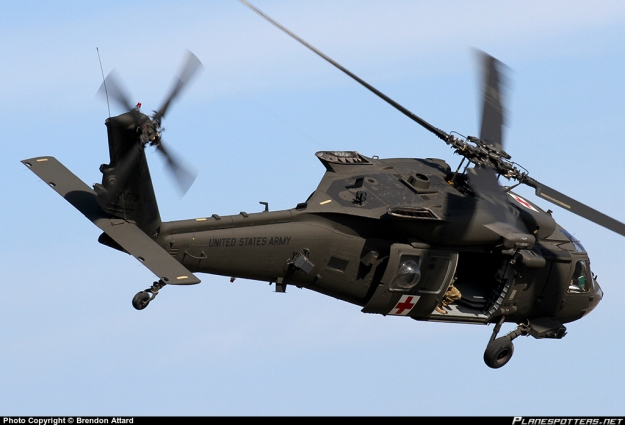Understanding the Skies: UH 60 Helicopter Maintenance List
Understanding the Skies: UH 60 Helicopter Maintenance List
Blog Article
Comprehending the Mechanics and Design Behind Uh 60 Helicopters
The UH-60 helicopter, commonly recognized as the Black Hawk, stands as a pinnacle of contemporary rotorcraft technology, personifying a mix of durable engineering and complex technicians. As we peel off back the layers of the UH-60's layout, a world of intricate systems and meticulous design comes to light.
History of UH-60 Helicopters
The background of UH-60 helicopters traces back to the late 1970s when the United States Military sought a sophisticated and flexible utility helicopter to change its aging fleet. In reaction to this requirement, the Sikorsky Airplane Firm developed the UH-60 Black Hawk helicopter. Introduced in 1979, the UH-60 rapidly ended up being a staple in military procedures as a result of its impressive capacities.
The UH-60 was developed to stand out in a range of missions, including troop transport, clinical discharge, digital war, and unique procedures. Its capacity to adjust to different duties made it a valuable possession to the U.S. uh 60. Army and other army pressures worldwide
Throughout the years, the UH-60 system has actually gone through a number of upgrades and variations to boost its efficiency and equal developing goal requirements. These helicopters have actually seen considerable solution in problems such as the Gulf War, Afghanistan, and Iraq, showcasing their integrity and versatility in diverse functional atmospheres. The UH-60's abundant background is a testament to its enduring heritage as a leading energy helicopter.

Engine and Power Systems
Using cutting-edge propulsion technology, UH-60 helicopters are furnished with advanced engine and power systems to ensure optimum efficiency and dependability in a series of operational situations. The UH-60, generally understood as the Black Hawk, is powered by two General Electric T700-GE-701D engines, each qualified of providing up to 1,940 shaft horsepower. These turboshaft engines supply the required drive for the helicopter to accomplish its objectives properly, consisting of troop transportation, clinical emptying, and combat support.

Blades System and Aerodynamics
Exactly how do the rotor system and aerodynamics of UH-60 helicopters add to their operational efficiency and flight capacities? The rotor system of the UH-60 check my reference helicopter plays a vital role in giving lift and propulsion. The UH-60 features a four-bladed, fully articulated blades system that enables high maneuverability and stability throughout trip. This style allows the helicopter to carry out a variety of goals, from transport and clinical discharge to combat operations.
The rules of aerodynamics likewise play a key duty in the performance of UH-60 helicopters. The streamlined body and blades blade design reduce drag, enabling the helicopter to achieve greater speeds and much better fuel effectiveness. The aerodynamic style of the UH-60 also adds to its ability to run in diverse ecological problems, consisting of hot temperatures and high elevations.
Avionics and Trip Control Solution

In its detailed coordination with the blades system and aerodynamics of UH-60 helicopters, the avionics and trip control systems create an essential network of innovations shaping the airplane's operational capacities. Avionics include the digital systems made use of for interaction, navigation, and checking different aircraft functions. In the UH-60, these systems consist of electronic display screens, communication radios, general practitioner navigation, weather condition radar, and auto-pilot systems. These avionics systems give essential details to the pilots, enhancing situational awareness and making sure reliable and risk-free procedure of the helicopter.
The trip control systems of the UH-60 are in charge of converting the pilot's inputs right into the appropriate adjustments to the blades system, making sure steady trip and maneuverability. These systems contain hydraulic actuators, servos, and computer systems that interact to regulate the main and More Bonuses tail rotors, along with other trip control surfaces. By precisely managing the helicopter's trip dynamics, these systems make it possible for pilots to carry out a wide variety of goals, from transport and search-and-rescue to combat procedures, with precision and self-confidence.
Function and Applications in Air Travel
Avionics systems in UH-60 helicopters encompass an array of digital systems that aid in navigation, communication, surveillance, and regulating numerous airplane features. These systems consist of electronic screens, auto-pilot systems, communication radios, GPS navigating tools, and weather radar. In addition, these systems integrate safety features such as auto-pilot modes, terrain understanding alerting systems, and security enhancement systems to boost the general security and functional capabilities of the UH-60 helicopters in numerous goals, consisting of troop transport, medical discharge, search and rescue, and aerial firefighting.
Final Thought
In conclusion, Go Here the UH-60 helicopter is a functional airplane with an abundant background and progressed design. Its engine and power systems, rotor system, the rules of aerodynamics, avionics, and flight control systems all work with each other to make it a reputable and effective equipment.
In its intricate control with the rotor system and aerodynamics of UH-60 helicopters, the avionics and trip control systems form a critical network of modern technologies forming the airplane's functional capabilities.The trip control systems of the UH-60 are liable for equating the pilot's inputs into the appropriate modifications to the rotor system, guaranteeing stable flight and maneuverability. Avionics systems in UH-60 helicopters encompass a variety of electronic systems that help in navigation, interaction, surveillance, and controlling different aircraft functions. In addition, these systems incorporate safety attributes such as autopilot modes, terrain understanding cautioning systems, and stability enhancement systems to enhance the total safety and security and functional capabilities of the UH-60 helicopters in different goals, consisting of army transport, clinical discharge, search and rescue, and aerial firefighting.
Its engine and power systems, rotor system, aerodynamics, avionics, and flight control systems all work together to make it a reliable and reliable device.
Report this page